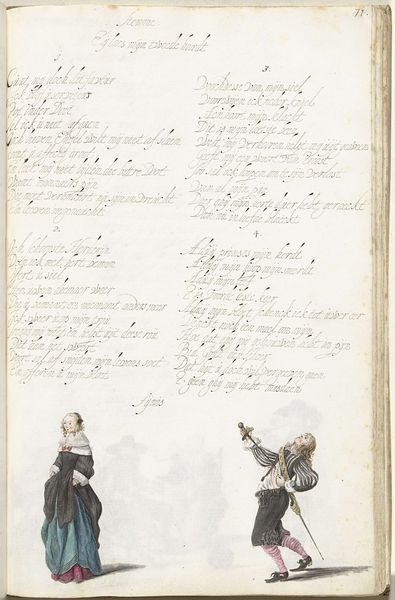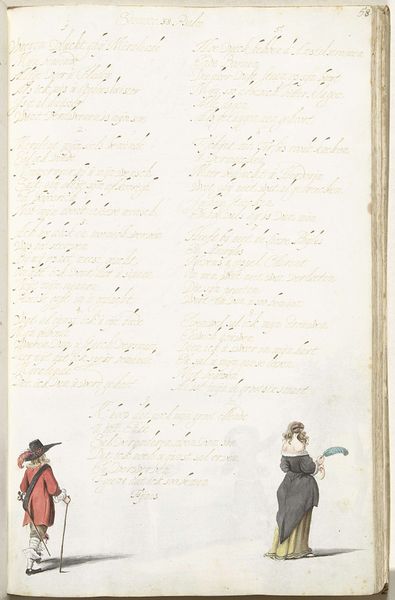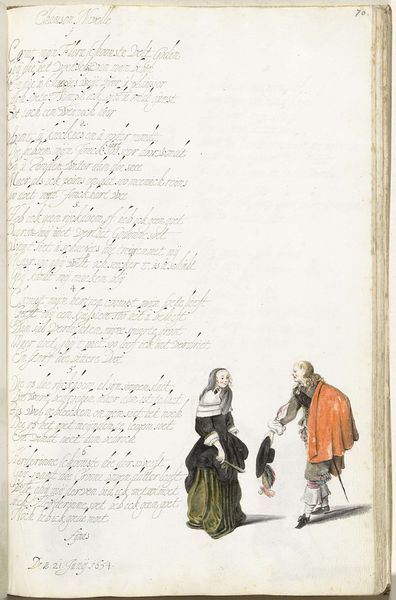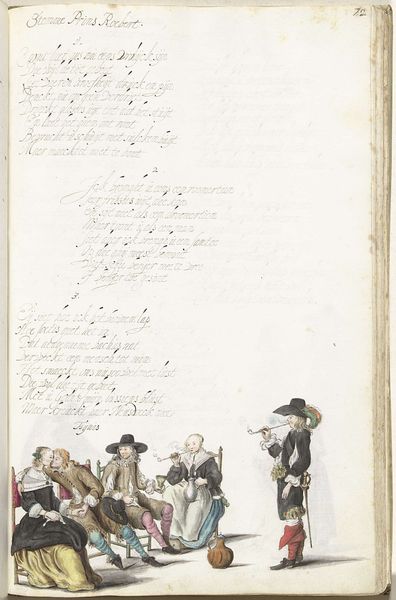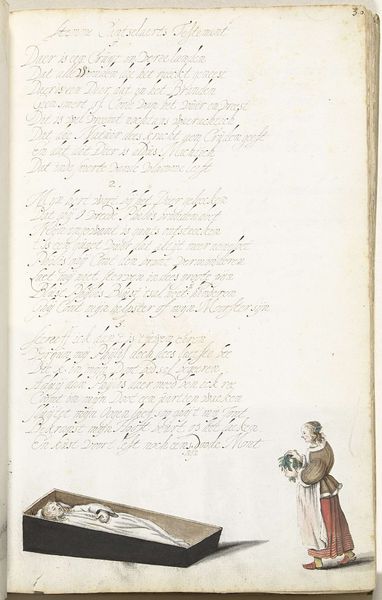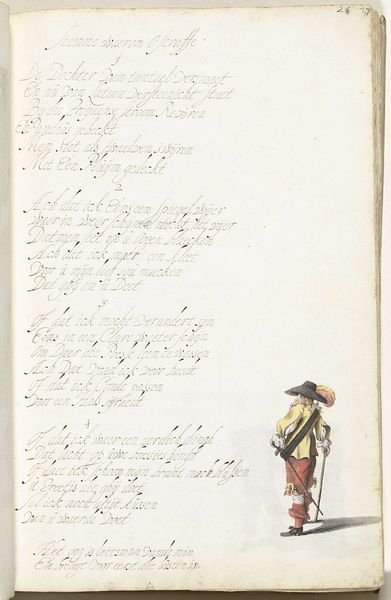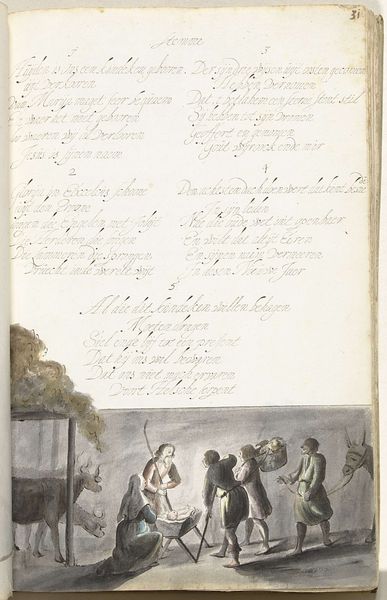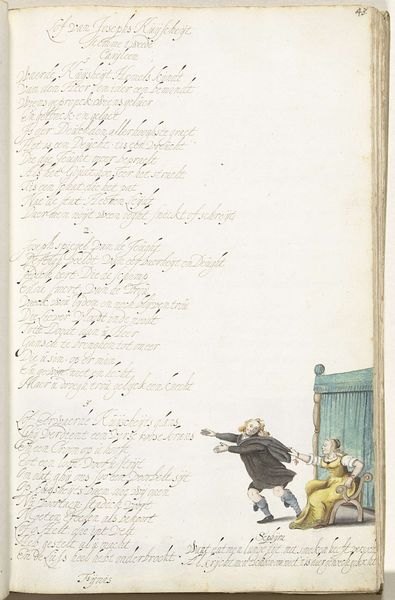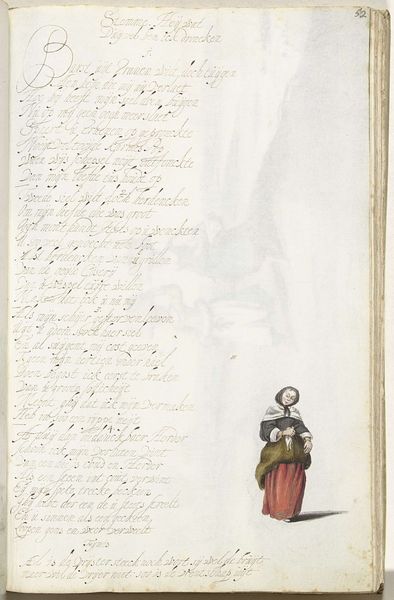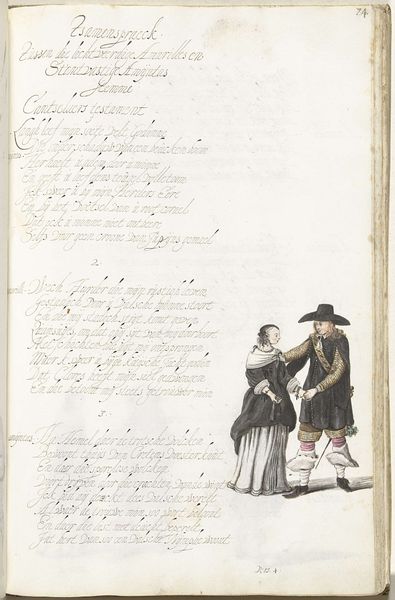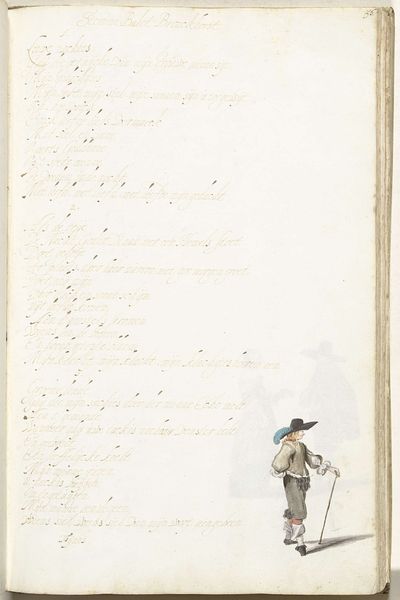
Heer en een dame staand voor een arme moeder en haar kinderen 1654 - 1655
0:00
0:00
painting, watercolor
#
dutch-golden-age
#
painting
#
figuration
#
watercolor
#
watercolour illustration
#
genre-painting
Dimensions: height 313 mm, width 204 mm
Copyright: Rijks Museum: Open Domain
Curator: Let’s discuss this intriguing watercolor by Gesina ter Borch, created around 1654 or 1655, which we know as "Heer en een dame staand voor een arme moeder en haar kinderen" at the Rijksmuseum. What is your initial take? Editor: The composition, despite its simplicity, strikes me with a stark contrast. On one side, the obviously affluent couple, drawn with sharper lines; and on the other, a struggling mother rendered with an almost ghostly ethereality. There is a fragility here. Curator: Indeed. Ter Borch has carefully arranged the figures to maximize that effect. Look closely at the application of the watercolor. She is controlling contrasts in lightness to create compositional relationships among figures on a single picture plane. Semiotic analysis reveals how ter Borch highlights class distinctions through line quality, form and hue. Editor: I’m drawn to the implied narrative. The iconography of charity and social disparity in the 17th century Dutch Republic is front and center here. Notice the almost accusatory gaze of the poor mother— the weight of her children burdens her back but the artist also subtly shifts attention to what is in the balance. This speaks volumes about moral obligations. Curator: Precisely. The very flatness of the image plane serves to compress this exchange, a structured tableau of social commentary. The negative space around each figure isolates them but there is a unity when observed as an orchestration. Ter Borch clearly understood how such spatial relations could communicate complex narratives, embedding a system of meaning within what could otherwise be seen as simple social reportage. Editor: It is interesting how she doesn't judge. It's not overly sentimental nor a condemnation. The cultural memory of such interactions—the dance between giver and receiver—resonates deeply, especially when seen through the eyes of a female artist of her time. The children clinging to their mother is a near universal symbol, the symbol is the same, and this piece adds just another note of depth. Curator: Her treatment of light enhances this ambiguity. Notice how she subtly illuminates both the well-dressed pair and the impoverished family, thereby mitigating excessive valorization of either social standing. She establishes, with masterful deftness, a balanced opposition, where moral complexities can be expressed formally, rather than literally. Editor: The visual conversation that this watercolour creates feels surprisingly timeless, especially within the larger historical context. The struggles portrayed and their rendering within a formal painting speaks volumes about the social contract and human dignity. Curator: A compelling encapsulation. The structural tension embedded in this composition provides for very fertile and further examinations.
Comments
No comments
Be the first to comment and join the conversation on the ultimate creative platform.

